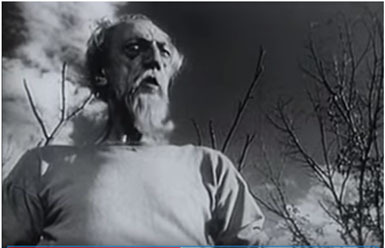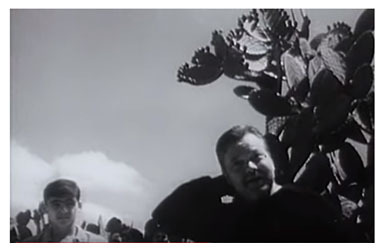Don Quixote de Orson Welles and Film Adaptations
Famed director Orson Welles was obsessed with making a film version of Don Quixote. He began filming in 1957 and filmed bits and pieces throughout his life, even after the death of the actor who portrayed Don Quixote. He never finished the film, as he died before production was over. However, in 1992, director Jess Franco assembled the film and made some edits, releasing what we know now as Don Quixote de Orson Welles. The content and direction of the film itself can’t entirely be attributed to Orson Welles, because of the edits made by Franco, but some of Welles’s more Cervantine ideas definitely shine through.
Welles in making this movie seems to be enraptured by the metaliterary parts of Don Quixote, which include acknowledging the author and remarking on the nature of books, while also exalting the idea of a unique author. Welles seems to want to translate these themes to the screen. In the opening scene of the film, Welles is shown getting out of a car and pointing a handheld camera at the lens, signifying his power as director and auteur.
The complex nature of the narrator is also addressed in this adaptation. Welles appears as the narrator for some parts of the movie, appearing in some parts physically and interacting directly with characters, sometimes conversing with Sancho as a disembodied voice of a narrator. There is also a section of Welles walking through Spain, musing about his love for Spain as a narrator and the nature of Don Quixote as a character. This serves to create a more metacinematic feel, as the director of the film is inserting himself into the film.
El director de películas Orson Welles tenía una obsesión de crear una película de Don Quixote. Empezó a rodar su adaptación en el año 1957 y continuó a rodar a través de su vida, incluso cuando murió Francisco Reiguera, su Quixote. Nunca pudo terminar la película porque se murió durante producción en 1985. Unos años después, en 1992, director español Jess Franco quiso terminar la adaptación. Recogió lo que rodó Welles y lo redactó, dejándonos lo que ahora llamamos Don Quixote de Orson Welles. Aunque hay muchas redacciones por parte de Franco, todavía se ve que Welles tenía muchas ideas cervantinas.
Parece que Welles se fascinó con las ideas metaliterarias de Don Quixote, que incluyen la inclusión y reconocimiento del autor supremo y la crítica de la forma del libro. Parece que Welles pretendió adaptar esos elementos a la forma de la película. En la primera escena de la película, Welles sale de un coche y apunta una cámara pequeña hacia la lente, mostrando el mirador que Welles tiene mucha poder como director y auteur de cinema.
La película de Welles también se enfoca en el rol del narrador en la adaptación. Welles por gran parte de la película es el narrador. Muchas veces aparece en la película como personaje, e interactúa con los personajes. Otras veces, habla con Sancho sin cuerpo, funcionando simplemente como narrador. También existe una sección de Welles caminando por España, comentando en Don Quixote como personaje. Todo esto trata de apoyar la idea de la “metacinema,” mostrando el director en una película.
-- Jake Van Wiggeren


